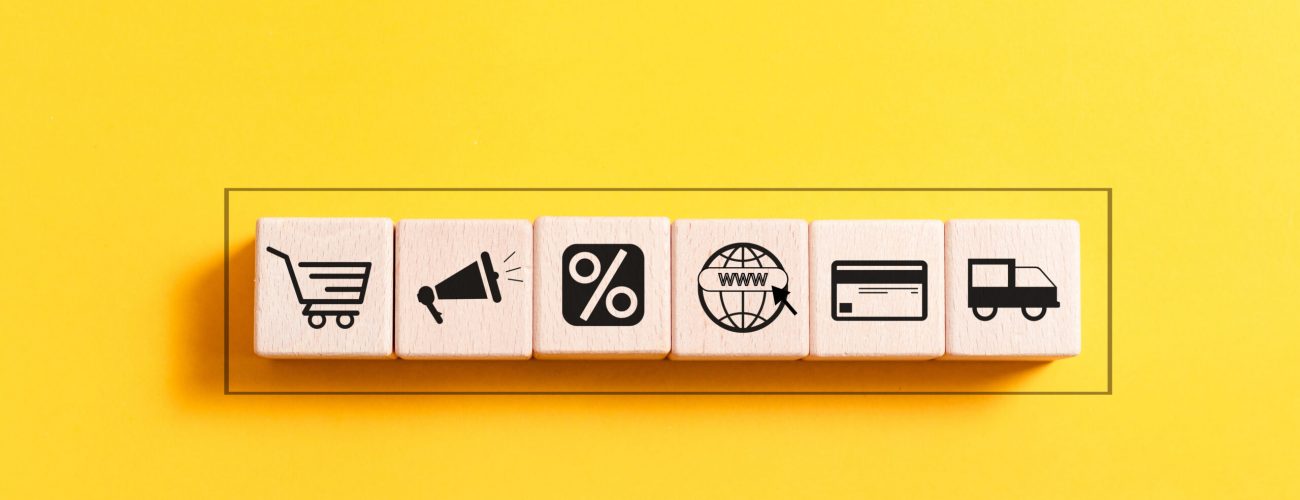Lean eCommerce is the latest buzzword floating around in the world of online enterprises. And for good reason. This digital business ideology is all about maximizing customer impact while minimizing the resources you need to do it. If your wondering just how the ideology of lean eCommerce can work for your business, keep reading on.
What is Lean eCommerce?
Online business has certainly flourished in the post-pandemic world, with online stores surpassing the results of traditional brick-and-mortar retail. There are plenty of applications and strategies for approaching online commerce, and among them is the transformative approach of lean eCommerce.
Lean eCommerce focuses on creating more value for customers with fewer resources. It’s about streamlining operations, reducing waste, and optimizing processes to deliver products and services as efficiently as possible.
Lean principles can be applied to every aspect of your business, from product development to marketing, operations, customer service, and more. If you need a 101 on this eCommerce strategy, look no further. Here’s our guide to lean eCommerce.
Lean eCommerce: real-world applications
Lean eCommerce isn’t just a theoretical concept; it’s applied to various businesses operating in the eCommerce space. From small startups to large corporations, companies use lean principles to refine their online presence, enhance customer experiences, and improve their bottom line.
Minimum viable product (MVP) testing
Creating a robust eCommerce platform can cost your business a pretty penny. Instead of investing significant resources upfront to develop your eCommerce platform, lean eCommerce startups launch a basic storefront with only the essential functionalities. Over time, you gather feedback from early users to gradually improve your platform.
Drop shipping and print-on-demand
Lean eCommerce entrepreneurs will often leverage dropshipping and print-on-demand services to minimize their upfront inventory costs and operational complexities. Partnering with suppliers who handle inventory management and order fulfillment gives you time back to focus on marketing, customer service, and growing your business without needing significant capital investment.
A customer-centric approach
Lean eCommerce prioritizes understanding your customer’s needs, preferences, and pain points. Market research, feedback, surveys, and customer journey mapping focus on creating personalized shopping experiences that resonate with your audience.
Agile scaling
Lean eCommerce also enables more agility when scaling your business. By staying lean and adaptable, you can experiment and pivot as market needs change, gather more customer feedback, and find new opportunities. This allows your business to scale operations while remaining competitive and innovative.
Why Does the Lean eCommerce Model Work?
The success of the lean eCommerce model is rooted in its emphasis on efficiency, agility, and customer-centricity. By focusing on essential features and minimizing waste, lean eCommerce businesses operate efficiently, optimizing resource allocation and achieving higher profitability. Additionally, their agility allows your business to quickly respond to market changes and customer feedback, staying ahead of competitors and capitalizing on emerging opportunities.
Your commitment to gathering customer insights and iterative development allows you to create products and experiences that resonate with your target audience, driving higher satisfaction and loyalty. This customer-centric approach fosters innovation and mitigates risk by validating assumptions early in the process and gradually scaling based on market demand.
With a culture of continuous improvement, lean eCommerce businesses drive ongoing efficiency gains, ensuring sustained growth and success in the competitive online retail landscape.
Tips for Lean eCommerce Businesses
For businesses looking to adopt a lean eCommerce approach, here are some actionable tips to employ in your operations.
Start with your MVP
Your minimum viable product should revolve around creating a version of your product or platform that includes only the essential features needed to solve your customer’s core problem or address their primary need. By focusing on your core functionality, you can launch your product quicker and with fewer resources, so you can gather feedback from early adopters.
When building your MVP, identify your key value proposition that resonates with your target audience. This might require conducting thorough market research, analyzing competitor offerings, and understanding customer pain points and preferences. Once you have a clear understanding of your target audience and their needs, you can prioritize the features and functionalities essential to delivering value to them.
Iterate based on customer feedback
Iterating based on customer feedback is a fundamental aspect of lean eCommerce, driving continuous improvement and customer satisfaction. This begins with actively gathering feedback from customers through various channels, including surveys, social media, and direct communication.
Analyzing this feedback allows you to identify recurring themes and prioritize areas for improvement based on their potential impact on customer experience and business goals. Implementing incremental changes and monitoring their performance validates your hypotheses, enables testing new ideas, and learning from the results before making further iterations.
Transparency and communication are essential throughout this process, as customers should be kept informed about the changes being made based on their feedback, fostering trust and engagement. The iterative approach to customer feedback in lean eCommerce emphasizes data-driven decision-making and agility. Continuous monitoring of your key metrics enables you to measure the iteration impact and identify the most effective strategies for achieving your goals.
By staying agile and adaptable, businesses can respond quickly to evolving customer needs and market dynamics, driving ongoing improvement and innovation in their eCommerce operations.
Optimize operational efficiency
Operational efficiency is crucial for maximizing productivity and minimizing waste. This involves automating repetitive tasks, optimizing supply chain management, and leveraging technology solutions to streamline workflows.
By investing in software solutions and integrations, you enhance efficiency across order processing, inventory management, and customer service, freeing up time to focus on core business activities. Additionally, outsourcing non-core functions like fulfillment and customer support can reduce overhead costs and improve scalability, allowing access to specialized expertise while maintaining a lean operational structure.
A well-optimized eCommerce website is also critical for operational efficiency, providing a seamless and responsive user experience. By optimizing page load times, minimizing friction in the checkout process, and ensuring compatibility across devices and browsers, businesses can reduce bounce rates and improve conversion rates. Regular reviews of operational processes and continuous iteration further drive efficiency gains, ensuring that lean eCommerce businesses remain agile and competitive.
These efforts combined enable sustainable operational excellence, delivering value to customers while maximizing profitability and scalability.
Focus on customer acquisition and retention
You must prioritize cost-effective marketing channels such as social media advertising, content marketing, and influencer partnerships to efficiently reach and engage your target audience. Personalizing marketing efforts through data analytics and segmentation enhances relevance and effectiveness, driving customer engagement, conversions, and brand loyalty.
Simultaneously, investing in strategies to retain existing customers is essential. Providing exceptional customer service, loyalty programs, and personalized post-purchase communication fosters satisfaction and encourages repeat purchases, ultimately increasing customer lifetime value and reducing churn.
Email marketing and CRM systems play pivotal roles in both customer acquisition and retention efforts. Leveraging email campaigns for personalized communication and targeted marketing initiatives enhances customer engagement and drives conversions. Implementing CRM systems facilitates effective management of customer interactions, enabling personalized communication and relationship-building.
By striking a balance between acquiring new customers and retaining existing ones, lean eCommerce businesses can cultivate a loyal customer base, drive sustainable growth, and establish a competitive edge in the marketplace.
Measure and analyze key metrics
Tracking your key metrics is essential to the lean eCommerce ideology. Identify the most relevant key performance indicators (KPIs) aligned with your business goals, such as conversion rates, customer acquisition cost (CAC), and customer lifetime value (CLV). Utilize data analytics tools to collect and process data from various sources, enabling comprehensive analysis of customer behavior, traffic patterns, and sales performance.
Continuously monitor key metrics, leveraging automated reporting and alerts, to stay proactive in identifying trends and anomalies. Segment data for deeper insights and conduct cohort analysis to track the behavior of specific customer groups over time. Experimentation and A/B testing allow you to test hypotheses and optimize your strategies, while iterative optimization based on data-driven insights drives continuous improvement across all aspects of the eCommerce operation.
By effectively measuring and analyzing key metrics, you can effectively optimize your strategies, drive growth, and remain agile in a competitive market landscape. Data-driven decision-making enables you to adapt and evolve approaches over time, maximizing the impact of your efforts and staying responsive to changing customer needs and market dynamics.
The 101 on Lean eCommerce
Lean eCommerce is not just a passing trend; it’s a robust approach to doing business in the digital age. Understanding what lean eCommerce is, recognizing its real-world applications, and implementing the strategic tips above enable your business to thrive in an increasingly competitive online marketplace. Remember, the goal is to create more value for your customers while using fewer resources—a win-win for both your business and its clientele.
Read more personal insights from our roundup experts on our eCommerce page.






